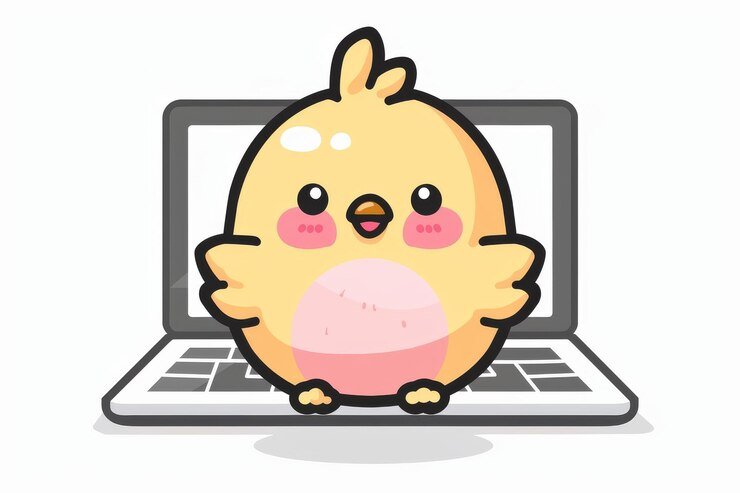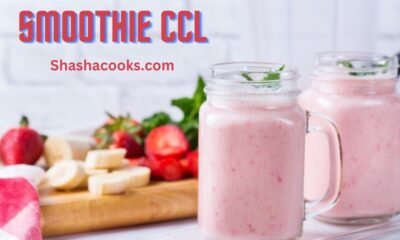Technology
The insidious proliferation of modern marketing

Marketing is everywhere. From the moment you wake up to the moment you close your eyes at night, you’ve likely encountered some form of marketing—whether on your phone, on TV, or even embedded in the social media content you consume. Modern marketing has evolved far beyond simple product promotions. It’s become a pervasive force that shapes our desires, influences our decisions, and sometimes even manipulates our perception of reality. But how did we get here? Let’s explore the insidious proliferation of modern marketing and how it has subtly infiltrated every corner of our lives.
The Evolution of Marketing
Traditional marketing was once straightforward: advertisements in newspapers, commercials on TV, and the occasional billboard. The primary focus was to inform the consumer about a product or service. But with the digital revolution, marketing has transformed into something much more powerful.
Modern marketing uses data-driven strategies, relying on the massive amounts of personal data collected from consumers’ online activities. Digital platforms allow brands to track every click, like, and share, enabling them to craft hyper-targeted messages that feel personal and relevant. This transition from mass marketing to personalized marketing has fundamentally changed how businesses communicate with consumers.
The Ubiquity of Marketing Messages
You’ve probably noticed that marketing is now nearly impossible to escape. Ads follow you from your phone to your laptop and even pop up in unexpected places like apps or video games. Social media platforms like Instagram and Facebook have become marketing hubs, where advertisements are carefully woven into your feed. Digital billboards, personalized banners, and in-app notifications mean that wherever you go, an ad is waiting for you.
Even your personal spaces, like your inbox or text messages, are not immune to marketing. Brands have perfected the art of seamlessly integrating their messages into your daily life, blurring the lines between content and advertisement.
The Personalization of Marketing
One of the most insidious aspects of modern marketing is its personalization. Companies now use algorithms to collect data about your online behavior—what you search, what you buy, and even how long you spend looking at something. This data is then used to create personalized ads tailored specifically to you.
At first glance, this might seem convenient. Who wouldn’t want to see ads for things they’re actually interested in? However, the darker side of this is that personalized ads exploit your psychology. By tapping into your desires, fears, and emotions, these ads can manipulate you into making purchases you never intended to. It’s marketing on a deeply personal level.
Social Media: The New Marketing Battleground
Social media has revolutionized marketing. Instead of traditional celebrities, social media influencers—often everyday people with large followings—now wield immense power over their audiences. Brands collaborate with these influencers to subtly advertise products through what looks like genuine recommendations. This form of advertising is often indistinguishable from regular content, making it more difficult for consumers to recognize they’re being marketed to.
Then there’s the rise of native advertising—ads that blend into the platform’s environment so seamlessly that they appear to be part of the natural user experience. Sponsored posts and brand partnerships often blur the lines between content and commercial, making it increasingly hard for users to tell when they’re being sold to.
The Role of Algorithms in Marketing
Ever wondered why certain ads or posts appear on your feed? That’s the work of algorithms. Algorithms prioritize content based on what they believe you’ll engage with most. While this can make for a more personalized experience, it also means that marketing messages are tailored to fit within your echo chamber. If you’ve been browsing for new shoes, it’s no coincidence that shoe ads start appearing everywhere.
These algorithms feed off your past behaviors, reinforcing your preferences and habits, making it harder to break free from a cycle of targeted marketing.
Manipulation Through Fear and Desire
Marketing isn’t just about presenting products; it’s about evoking emotion. Advertisers are masters at playing on two powerful human emotions: fear and desire. Whether it’s the fear of missing out (FOMO) or the desire for a better, more luxurious lifestyle, modern marketing uses emotional triggers to compel you to act.
Take, for example, limited-time offers or exclusive deals. These tactics create a sense of urgency, making you feel like if you don’t act now, you’ll lose out. It’s a carefully crafted psychological play designed to push you into buying decisions.
The Impact on Consumer Behavior
It’s no secret that marketing influences consumer behavior. But the extent of its influence is staggering. Modern marketing techniques have become so sophisticated that they can subtly nudge you toward a purchase without you even realizing it. This manipulation happens through a mix of psychology, personalization, and repetition.
Over time, these tactics condition us to consume more and more, creating a culture of excessive consumption. We buy things not because we need them, but because we’ve been led to believe that they will enhance our lives.
Marketing and Consumerism
Marketing is a driving force behind consumerism. In a world where new products are constantly being pushed at us, there’s an implicit message: to be happy, you must keep buying. Marketing encourages this cycle of consumption, promoting the idea that your worth or happiness is tied to material possessions.
Planned obsolescence, a marketing strategy where products are designed to break or become outdated, further fuels consumerism. It ensures that we’ll always come back for more, feeding into an endless loop of purchasing.
Ethical Concerns in Modern Marketing
As marketing becomes more invasive, ethical concerns arise. One of the biggest issues is privacy. With companies collecting massive amounts of personal data to craft their marketing strategies, many consumers are left wondering: how much do brands know about me? And should they have this information in the first place?
Deceptive advertising is another ethical dilemma. With the rise of fake news and misleading product claims, consumers are often left questioning the truthfulness of the marketing messages they encounter.
Marketing to Vulnerable Audiences
Some of the most troubling aspects of modern marketing come into play when vulnerable groups, like children and teenagers, are targeted. These groups are more impressionable and less likely to recognize marketing manipulation. This raises significant ethical questions, as these demographics are often bombarded with ads promoting unhealthy lifestyles or unattainable standards of beauty.
The Dark Side of Influencer Marketing
While influencer marketing can seem authentic, it often lacks transparency. Many influencers are paid to promote products, but their audience may not always be aware of this. The impact on mental health can also be profound, as influencers present curated, idealized versions of life that may cause followers to feel inadequate or envious.
Sustainability and Greenwashing in Marketing
Sustainability has become a hot topic in recent years, and many brands have capitalized on this trend by promoting their products as eco-friendly. However, not all of these claims are truthful. Let’s explore the insidious proliferation of modern marketing and how it has subtly infiltrated every corner of our lives. Greenwashing is a practice where companies exaggerate or fabricate their environmental efforts, misleading consumers who are trying to make more ethical choices.
The Future of Modern Marketing
Looking ahead, modern marketing is set to become even more advanced with the rise of AI and machine learning. These technologies will allow for even more personalized and targeted marketing strategies, raising further ethical questions. However, there’s also hope for a shift towards more ethical marketing practices, where brands prioritize transparency, honesty, and consumer well-being over profit.
Conclusion
Modern marketing has become an omnipresent force in our lives, shaping our desires, decisions, and even our worldview. While it offers convenience and personalization, it also raises significant ethical concerns, from privacy violations to the manipulation and exploitation of vulnerable groups. As consumers, it’s essential to be aware of these tactics and remain critical of the marketing messages we encounter. By doing so, we can make more informed decisions and resist the insidious influence of modern marketing.
Let’s explore the insidious proliferation of modern marketing and how it has subtly infiltrated every corner of our lives.
FAQs
1. What is modern marketing?
Modern marketing refers to the use of digital platforms, data analytics, and personalized strategies. Let’s explore the insidious proliferation of modern marketing and how it has subtly infiltrated every corner of our lives.
2. How does marketing affect consumer behavior?
Marketing uses psychological tactics, personalization, and repetition to subtly manipulate consumer behavior, often pushing individuals towards purchases they hadn’t originally intended to make.
3. What is the difference between traditional and modern marketing?
Traditional marketing relied on mass communication like TV ads and billboards. Whereas modern marketing is highly personalized, leveraging data and digital platforms to target individuals.
4. How do algorithms influence marketing strategies?
Algorithms analyze consumer behavior and predict preferences, ensuring that the ads and content. You see specifically to your interests and habits, often reinforcing echo chambers.
5. What is greenwashing?
Greenwashing is the practice of misleading consumers by falsely promoting a product or company as environmentally friendly when in reality, their practices are not sustainable.
Technology
internet chicks: A Digital Phenomenon

The digital age has revolutionized connecting, sharing, and consuming content. At the heart of this transformation is the rise of “internet chicks,” a term that refers to women who have gained prominence and influence through their online presence, particularly on social media. These women, often young, have successfully navigated the complexities of the internet to build personal brands, create communities, and even influence global culture. This article explores the origins, characteristics, business aspects, and cultural impact of internet chicks, along with the challenges they face.
Origins of Internet Chicks
The phenomenon of internet chicks can be traced back to the early 2000s, with the advent of social networking sites like MySpace, LiveJournal, and early iterations of blogging platforms. These platforms provided the first real opportunity for individuals to share their lives, thoughts, and creative endeavors with a broader audience without the need for traditional media outlets.
As social media evolved, platforms like YouTube, Instagram, and later TikTok emerged, offering more sophisticated tools for content creation and distribution. This evolution allowed internet chicks to expand their reach and refine their brands, turning what was once a hobby into a lucrative career path.
Defining Characteristics
While the term “internet chick” can encompass a wide variety of personalities and content creators, there are several defining characteristics that many share:
-
Strong Personal Branding
- Aesthetic Consistency: Internet chicks often have a strong visual identity that is consistently reflected in their posts. This could be through color schemes, fashion choices, or even the themes they explore in their content.
- Niche Expertise: Many internet chicks carve out a niche, whether it’s in beauty, fashion, fitness, gaming, or lifestyle advice. By focusing on a specific area, they can attract a dedicated following interested in that particular topic.
-
Authenticity and Relatability
- Transparency: Followers are drawn to internet chicks who share not just their successes but also their struggles. This transparency fosters a sense of authenticity that resonates with audiences.
- Engagement: Active engagement with followers is crucial. Internet chicks often respond to comments, host Q&A sessions, and create content based on follower requests, creating a two-way relationship with their audience.
-
Versatility and Adaptability
- Content Evolution: Internet chicks are often early adopters of new trends and platforms, ensuring they remain relevant. They may start on one platform but branch out to others, or they might diversify their content to include different formats like vlogs, podcasts, or written blogs.
- Multiple Revenue Streams: Beyond social media, many internet chicks expand into other ventures such as launching their brands, writing books, or even venturing into traditional media.
The Business of Being an Internet Chick
The ability to monetize an online presence has become a key aspect of the internet chick phenomenon. Several revenue streams have emerged, making it possible for these influencers to turn their digital presence into a full-time career:
-
Sponsored Content and Brand Partnerships
- Influencer Marketing: Brands partner with internet chicks to promote products, tapping into their influence and trusted relationships with followers. These collaborations are often highly lucrative, with payment depending on the influencer’s reach and engagement rates.
- Product Placement and Reviews: Many internet chicks naturally incorporate products into their content through product placements or by providing reviews, which can be a subtle yet effective form of advertising.
-
Affiliate Marketing
- Commission-Based Income: Internet chicks often share affiliate links to products they endorse. When followers purchase through these links, the influencer earns a commission, creating a passive income stream.
-
Merchandise and Product Lines
- Personalized Merchandise: From clothing lines to beauty products, many internet chicks launch their own merchandise, capitalizing on their brand. Some have even developed entire product lines that reflect their online persona.
- E-Commerce: E-commerce platforms have made it easier for internet chicks to sell their products directly to their followers, bypassing traditional retail channels.
-
Content Monetization
- Ad Revenue: Platforms like YouTube offer ad revenue sharing, where internet chicks earn money based on the number of views their content receives. Similarly, TikTok and Instagram have introduced monetization features for creators.
- Subscription Models: Some internet chicks use platforms like Patreon or OnlyFans to offer exclusive content to subscribers, providing a steady income while offering fans something unique.
Cultural Impact
The influence of internet chicks extends far beyond the confines of social media. They have become trendsetters, shaping everything from fashion and beauty standards to lifestyle choices and social norms. Some key areas of their cultural impact include:
-
Fashion and Beauty
- Trendsetting: Internet chicks are often at the forefront of fashion and beauty trends. Their influence can lead to the popularization of specific styles, brands, or products, sometimes even propelling lesser-known brands into mainstream popularity.
- Diversity and Inclusivity: Many internet chicks have used their platforms to challenge traditional beauty standards, promoting body positivity, diversity, and inclusivity in the fashion and beauty industries.
-
Social and Political Influence
- Advocacy and Activism: Beyond consumer culture, many internet chicks engage in advocacy, using their platforms to raise awareness about social issues such as mental health, environmental sustainability, and gender equality.
- Community Building: Internet chicks often create communities around shared interests or causes, fostering a sense of belonging among their followers. These communities can be powerful forces for change, both online and offline.
-
Impact on Traditional Media
- Redefining Celebrity: The rise of internetchicks has blurred the lines between traditional celebrities and digital influencers. Today, many internetchicks enjoy the same level of fame and influence as actors, musicians, and other traditional media figures.
- Changing Marketing Strategies: Brands are increasingly turning to internetchicks for marketing campaigns, recognizing their ability to reach targeted audiences more effectively than traditional advertising methods.
Challenges and Criticisms
While the internet chick phenomenon has created new opportunities, it also comes with significant challenges:
-
Mental Health and Burnout
- Pressure to Maintain Perfection: The constant need to create content and maintain a perfect online persona can lead to significant stress and burnout. The pressure to stay relevant in a fast-paced digital world can take a toll on mental health.
- Public Scrutiny: Internet chicks often face intense public scrutiny, with every aspect of their lives subject to commentary and criticism. This can lead to anxiety, depression, and other mental health issues.
-
Authenticity vs. Commercialization
- Balancing Authenticity with Business: As internet chicks increasingly monetize their platforms, they face the challenge of maintaining authenticity while promoting products and services. Followers can sometimes perceive excessive commercialization as inauthentic, leading to a loss of trust.
- Ethical Considerations: The commercialization of personal lives raises ethical questions, particularly about privacy and the boundaries between public and private life. Additionally, the promotion of certain products or lifestyles can be seen as problematic if it leads to unrealistic expectations among followers.
-
Longevity and Relevance
- Staying Relevant: The rapid evolution of digital platforms means that internet chicks must constantly adapt to stay relevant. What works today might not work tomorrow, requiring ongoing creativity and innovation.
- Saturation of the Market: As more people seek to become influencers, the market has become increasingly saturated, making it harder for new internet chicks to stand out and for established ones to maintain their position.
Conclusion
The rise of internetchicks is a testament to the transformative power of the internet and social media. These women have leveraged digital platforms to create influential brands, build loyal communities, and drive cultural change. While the challenges they face are significant, the potential for impact is immense. As the digital landscape continues to evolve, internetchicks will likely play an increasingly central role in shaping the future of online culture, business, and even social norms.
Technology
AI SEO tools Scale agile Solutions to Boost Marketing

In today’s competitive digital landscape, businesses must combine efficiency, accuracy, and adaptability to thrive. Artificial Intelligence (AI) and Agile methodologies redefine how we approach marketing and project management. Together, AI SEO tools scale agile solutions and provide unparalleled advantages for organizations aiming to dominate their niches.
AI SEO tools scale agile solutions enhance search engine optimization strategies and enable businesses to implement Agile principles effectively, ensuring seamless collaboration and continuous delivery of value.
The Power of AI SEO Tools
AI-powered SEO tools leverage advanced algorithms to analyze vast datasets, identify trends, and optimize content for maximum visibility. These tools integrate seamlessly into Agile workflows, enabling teams to adapt quickly to search engine updates and audience behavior changes.
Benefits of AI in SEO:
AI tools have transformed the SEO landscape, offering precision, speed, and adaptability that were previously unattainable. These tools are designed to simplify complex tasks, provide data-driven insights, and help marketers stay ahead of the competition. Here are some key benefits of incorporating AI tools into your SEO strategy:
1. Enhanced Keyword Research
AI tools analyze vast datasets to identify high-performing keywords based on user intent, search trends, and competition levels. This ensures you target the most relevant keywords to drive traffic and conversions.
- Example Tools: SEMrush, Ahrefs, and Google Keyword Planner.
- Impact: Save time and uncover long-tail keywords with higher conversion potential.
2. Content Optimization
AI-powered tools offer actionable suggestions to improve your content for better readability, engagement, and search engine rankings. These tools evaluate factors such as keyword density, meta tags, and internal linking.
- Key Features: Readability checks, content scoring, and competitor analysis.
- Result: Creates content that resonates with both users and search engines.
3. Automation of Repetitive Tasks
AI tools automate time-consuming tasks like site audits, backlink analysis, and reporting. This frees up valuable time for marketers to focus on strategy and creativity.
- Examples of Automated Tasks: Fixing broken links, optimizing images, and generating performance reports.
- Benefit: Increased efficiency and reduced manual errors.
4. Predictive Analytics
AI tools analyze historical data to predict future trends and audience behavior. This allows marketers to proactively adjust their strategies and create content that aligns with anticipated demand.
- Use Case: Forecasting seasonal keyword performance.
- Advantage: Stay ahead of competitors by anticipating market shifts.
5. Personalized User Experience
AI tools help deliver personalized content by analyzing user behavior and preferences. Features like dynamic content and personalized recommendations enhance engagement and drive conversions.
- Applications: E-commerce recommendations, tailored blog posts, and targeted landing pages.
- Outcome: Improved user satisfaction and higher retention rates.
What Are Scaled Agile Solutions?
AI SEO tools Scale agile solutions extend the principles of Agile methodology across large enterprises. By fostering collaboration, transparency, and iterative development, these solutions break down complex projects into manageable tasks.
Key frameworks include:
- SAFe (Scaled Agile Framework): A structured approach for scaling Agile practices across an organization.
- LeSS (Large-Scale Scrum): Focused on simplifying processes for multiple Scrum teams.
- Disciplined Agile (DA): Tailored to suit the unique needs of diverse teams and industries.
When integrated with AI SEO tools, these frameworks help businesses respond faster to market demands and streamline content creation processes.
How AI SEO Tools Complement Agile Practices
The synergy between AI SEO tools and Agile solutions lies in their shared focus on adaptability and efficiency. AI empowers Agile teams with real-time insights, allowing them to make informed decisions and pivot quickly when necessary.
Ways AI SEO Tools Support Agile Teams:
- Real-Time Insights: Immediate access to performance metrics for iterative improvements.
- Collaboration Platforms: Tools like AI-driven project management software facilitate communication across distributed teams.
- Continuous Delivery: Automation ensures consistent output of high-quality content.
- Risk Mitigation: AI identifies potential pitfalls, enabling teams to proactively address issues.
Implementing AI SEO Tools in Scaled Agile Solutions
Step 1: Define Objectives
Start by aligning the goals of your AI SEO strategy with your Agile initiatives. Clearly defined objectives ensure cohesive efforts across teams.
Step 2: Select the Right Tools
Evaluate AI SEO tools like SEMrush, Ahrefs, and MarketMuse based on their integration capabilities with Agile frameworks.
Step 3: Foster Collaboration
Leverage tools like Jira or Trello, enhanced with AI insights, to promote transparency and streamline workflows.
Step 4: Emphasize Iteration
Regularly review SEO performance metrics and adjust strategies based on AI-generated reports.
Step 5: Scale Gradually
Begin with a pilot project to test the integration of AI SEO tools into your Agile processes before scaling organization-wide.
Top AI SEO Tools for Scaled Agile Solutions
1. SEMrush
SEMrush excels in competitor analysis, keyword research, and content optimization. Its integration with Agile tools makes it ideal for iterative workflows.
2. Ahrefs
Known for its backlink analysis and keyword insights, Ahrefs complements Agile principles by providing actionable data quickly.
3. MarketMuse
This AI tool specializes in content planning and optimization, aligning perfectly with Agile’s focus on delivering value.
4. BrightEdge
A comprehensive platform for enterprise-level SEO strategies, BrightEdge supports large-scale Agile frameworks like SAFe.
5. Surfer SEO
Offers detailed content analysis to ensure your web pages rank higher while maintaining Agile efficiency.
Benefits of Integrating AI SEO Tools with Agile Solutions
Increased Productivity: AI automates time-consuming tasks, enabling teams to focus on strategic objectives.
Improved ROI: Data-driven insights lead to better resource allocation and campaign results.
Scalability: Agile solutions supported by AI tools adapt seamlessly as businesses grow.
Enhanced Customer Experience: Personalized content strategies driven by AI ensure better engagement.
Overcoming Challenges in Integration
Integrating AI SEO tools with Agile solutions isn’t without challenges. Common obstacles include:
- Resistance to Change: Foster a culture of learning and experimentation to encourage adoption.
- Tool Compatibility: Invest in platforms that integrate seamlessly with your existing systems.
- Training Needs: Provide thorough training to ensure teams maximize the benefits of AI and Agile tools.
By addressing these challenges, organizations can unlock the full potential of AI-driven Agile workflows.
Conclusion
AI SEO tools and scaled Agile solutions are revolutionizing the way businesses operate. By combining the analytical prowess of AI with the flexibility of Agile, organizations can achieve greater efficiency, adaptability, and success in their digital marketing efforts. As technology continues to evolve, embracing these innovations will be crucial for staying ahead in an ever-changing market landscape.
FAQs
How do AI SEO tools help in Agile project management?
AI SEO tools provide real-time data, automation, and predictive analytics, streamlining Agile workflows and enhancing collaboration.
What are some examples of scaled Agile solutions?
Popular frameworks include SAFe, LeSS, and Disciplined Agile, each tailored to large-scale project management.
Can small businesses benefit from AI SEO tools?
Absolutely! AI SEO tools level the playing field by providing insights and automation that small businesses can use to compete with larger competitors.
How do I choose the right AI SEO tool?
Consider your specific needs, budget, and the tool’s compatibility with Agile methodologies. Tools like SEMrush and Ahrefs are great starting points.
What is the role of AI in scaling Agile solutions?
AI enhances data analysis, automates routine tasks, and provides insights, enabling Agile solutions to scale efficiently across organizations.
Is it expensive to integrate AI SEO tools with Agile frameworks?
While there may be upfront costs, the long-term benefits in productivity, ROI, and scalability often outweigh the initial investment.
Technology
Vidwud AI Significance for Modern Content Creation in 2024

In 2024, producing dynamic, captivating, and customized experiences that enthrall audiences will be the primary focus of content development rather than only producing visually good content. Vidwud, a state-of-the-art tool for artists, has become a leader in this field. Vidwud is revolutionizing multimedia storytelling with its cutting-edge capabilities, such as Image to Video AI.An example of how artificial intelligence is expanding the realm of creativity is Vidwud AI. Vidwud provides innovative tools that revolutionize conventional content creation techniques, with the goal of empowering producers. Its ability to convert static photographs into dynamic, captivating films with a few clicks is one of its most notable capabilities. This invention improves the caliber and adaptability of the information created in addition to saving time. Additionally, Vidwud’s tool hub offers special tools like the AI Dance Generator and Image to Video that make it simple for artists to create lively, motion-rich images.
Vidwud gives customers the tools they need to transform plain photos into captivating films that attract viewers and provide results, whether they are marketers or content producers. In a world where social media and communications are dominated by short-form videos, Vidwud can offer countless chances for creativity and interaction.
Modern Content Creation
The demand for video material has skyrocketed, and creators are looking for easier and faster ways to create videos of high quality. Static visuals are still helpful, but they don’t always give viewers the level of immersion they desire.With our Image to Video, Vidwud fills this gap, enabling designers to bring their images to life without requiring a great deal of technical know-how.
With the use of Vidwud AI technology, content producers can produce captivating content for Facebook and Instagram posts, video advertisements, or interactive presentations that captivate viewers.
What Makes Vidwud Image to Video a Game-Changer?
The main function of Vidwud image to video AI is to turn still photos into interactive videos. This application analyzes images and creates realistic animations using sophisticated artificial intelligence, offering seemingly straightforward images dimension, movement, and creativity.
Key Features of Image to Video AI:
- Ease of Use: Vidwud user-friendly interface means anyone can create professional-quality videos without prior editing skills.
- High Engagement: Videos have been proven to capture attention better than images, making Vidwud AI a valuable tool for marketers and influencers.
- Budget Friendly: Achieve comparable outcomes while paying the hefty prices associated with traditional video production.
Consider, for instance, transforming a single product photograph into an animation 30-second commercials video with effects and animations.
Why Vidwud Is Essential for Creators in 2024
Vidwud is more than a tool; it’s a complete content creation solution. It’s ideal for:
- Insta Influencers: Stand out with eye-catching visuals.
- Advertisers: Create compelling video ads that boost engagement and conversions.
- Startups: Save time and resources by generating professional videos in-house.
As 2024 progresses, the need for dynamic, immersive content will only grow. Vidwud ensures creators can keep up with these trends while delivering high-quality results.
-

 Technology2 weeks ago
Technology2 weeks agointernet chicks: A Digital Phenomenon
-

 Recipes9 months ago
Recipes9 months agoCrab Brulee Recipe: A Gourmet Delight
-

 Recipes9 months ago
Recipes9 months agoSmoothie CCL: A Delicious and Nutritious Trend
-

 FOOD2 weeks ago
FOOD2 weeks agoÇeciir: A Journey Through Turkish Cuisine
-

 FOOD9 months ago
FOOD9 months agoCornflake Meringue Cookies
-

 FOOD9 months ago
FOOD9 months agoNasi Uduk
-

 Recipes9 months ago
Recipes9 months agoThe Ultimate Bug Juice Camp Drink Recipe for Fun and Flavor
-

 BLOGS9 months ago
BLOGS9 months agoUnveiling the Innovation: BoltBól – Revolutionizing Accessibility and Mobility
